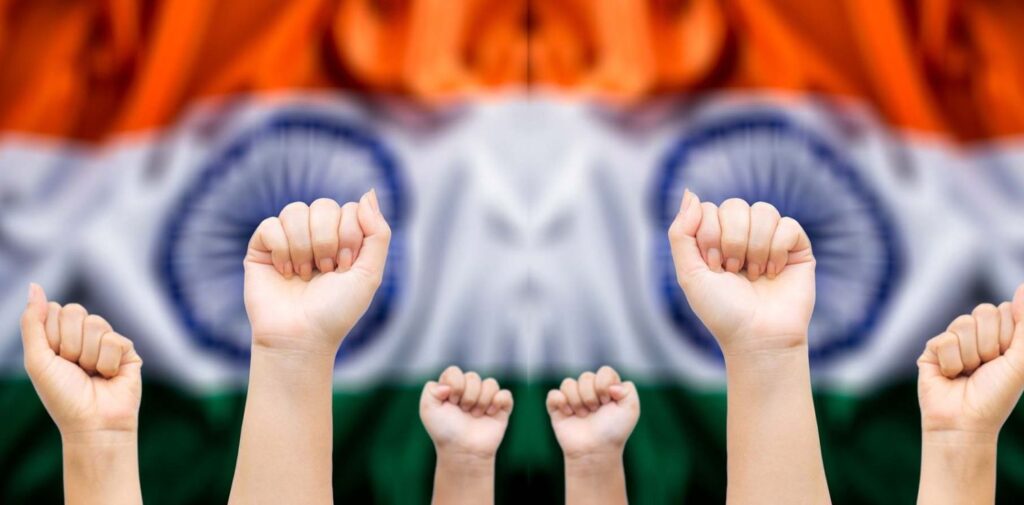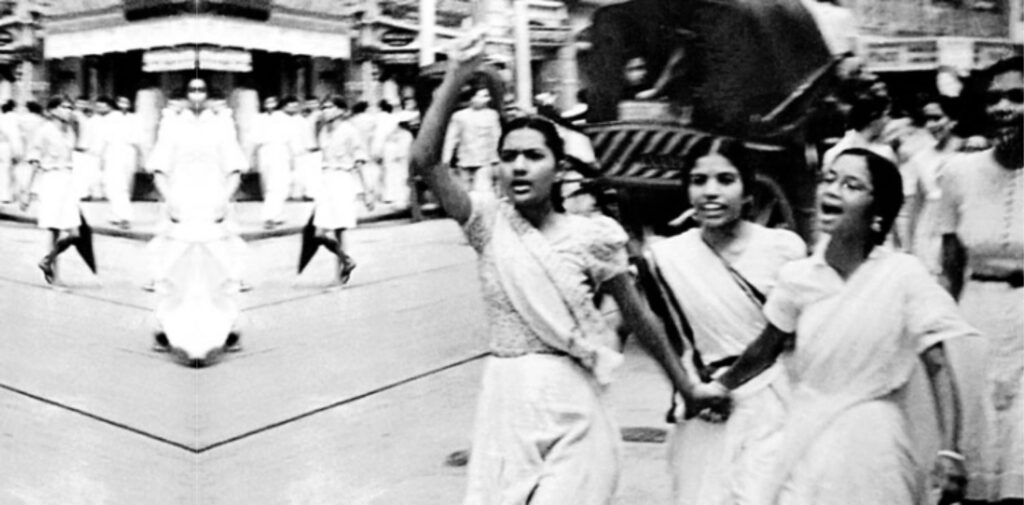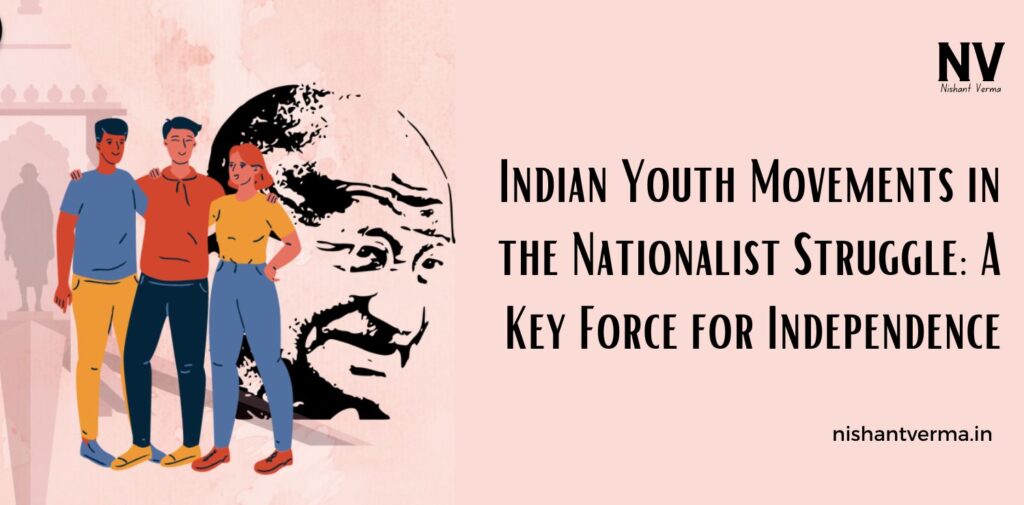India’s journey to independence was a long and arduous struggle that involved people from all walks of life, including the youth. The Indian youth played a crucial role in shaping the nationalist movement, providing energy, innovation, and dedication to the cause of freedom. From the late 19th century to the time of independence in 1947, youth movements became a driving force behind the national struggle. These movements ignited the spirit of nationalism and led to revolutionary changes in India’s political landscape. This article delves into the significance of Indian youth movements during the nationalist struggle, their contribution to India’s freedom, and the lasting impact they left on the nation.
The Rise of Nationalism and the Role of Youth
The nationalist movement in India gained momentum in the late 19th century, primarily led by intellectuals and political leaders. However, it wasn’t long before the youth of India became an active and significant force in the fight for independence. The idea of a free India resonated deeply with the younger generation, who were inspired by the changing political and social climate.
India’s colonial rule by the British brought numerous challenges and injustices, including economic exploitation, cultural suppression, and political marginalization. These factors motivated the youth to seek change, not just for themselves, but for the entire nation. The youth wanted to reclaim India’s rights, culture, and identity from the British.

Early Youth Movements: A Foundation for the Struggle
The first wave of organized youth movements emerged towards the end of the 19th century. The Indian National Congress (INC), which initially sought reforms under British rule, became the platform for younger leaders who were frustrated with the slow pace of change. While leaders like Dadabhai Naoroji, Gopal Krishna Gokhale, and Bal Gangadhar Tilak had begun challenging British policies, it was the youth that would inject new energy into the movement.
- The Bengal Renaissance and Youth Awakening: One of the earliest manifestations of youth involvement in the nationalist movement was the Bengal Renaissance. Figures like Rabindranath Tagore and Subhas Chandra Bose were at the forefront of this cultural awakening. They encouraged the youth to adopt a modern outlook while remaining rooted in Indian traditions. They believed that the future of India rested on the shoulders of the young generation.
- Swadeshi Movement (1905): A significant early youth movement was the Swadeshi Movement in Bengal, which arose in response to the partition of Bengal by the British. The youth led the charge for boycotting British goods and promoting the use of locally made products. The movement also saw the rise of revolutionary leaders like Lala Lajpat Rai, Bipin Chandra Pal, and Aurobindo Ghosh, who inspired young people to actively participate in protests, demonstrations, and the demand for self-rule.
- Formation of Youth Associations: During this period, numerous youth organizations were formed, such as the Anushilan Samiti and the Jugantar Party. These organizations aimed to foster revolutionary ideas and build a network of young nationalists who could challenge British authority. The youth became active participants in political activities like protests, strikes, and acts of civil disobedience.

The Role of Youth in Gandhi’s Leadership
Mahatma Gandhi’s arrival on the Indian political scene in the early 20th century was a turning point for the youth movements in India. Gandhi’s ideas of non-violence (ahimsa) and passive resistance (satyagraha) revolutionized the way India approached its fight for independence. His leadership inspired a whole new generation of young nationalists to join the struggle for freedom, not through violence, but through peaceful resistance.
- Non-Cooperation Movement (1920-22): One of the first mass movements led by Gandhi was the Non-Cooperation Movement, which called for Indians to boycott British goods, institutions, and services. The youth played a vital role in this movement, organizing protests, strikes, and picketing in every corner of the country. Young leaders like Jawaharlal Nehru, Subhas Chandra Bose, and Bhagat Singh emerged as powerful voices for independence during this period. The movement saw the widespread participation of students, youth organizations, and young intellectuals.
- Salt March (1930): The Salt March or Dandi March, led by Gandhi in 1930, is one of the most iconic moments in India’s struggle for independence. Young people participated in this act of defiance, which was a direct challenge to British colonial rule. The youth’s involvement in the march and their willingness to endure arrest and imprisonment became a symbol of India’s resolve to break free from British control.
- Quit India Movement (1942): The Quit India Movement of 1942 was another important event that saw massive youth participation. Gandhi’s call for “Do or Die” resonated with the youth, who were eager to rid India of British rule. The movement led to widespread arrests and the imprisonment of young leaders like Jai Prakash Narayan and Ram Manohar Lohia. Despite the violent suppression by the British, the youth’s resolve became stronger, and their active involvement contributed significantly to the weakening of British authority.
Revolutionary Youth Movements
While Gandhi’s non-violent approach to resistance was largely supported by the youth, there was also a significant section of young people who believed in more direct and revolutionary methods to achieve independence. These groups were inspired by nationalist thinkers who believed that peaceful protests alone would not be enough to free India from colonial rule.
- The Revolutionary Movement in Bengal: The revolutionary youth movement in Bengal, led by figures like Subhas Chandra Bose, Bagha Jatin, and Surya Sen, was aimed at using armed resistance to fight the British. These young leaders advocated for the use of force to achieve independence and were involved in activities like bomb-making, attacks on British officials, and organizing underground cells. While their efforts were suppressed, they left behind a legacy of courage and sacrifice.
- Hindustan Socialist Republican Association (HSRA): Founded by Bhagat Singh, Chandra Shekhar Azad, and other revolutionaries, the HSRA became the face of militant youth movements in India. Bhagat Singh, in particular, became a symbol of youthful defiance. His execution, after the Lahore Conspiracy Case, stirred up the Indian youth like never before, pushing many to adopt a radical stance against British imperialism.
- Azad Hind Fauj (Indian National Army): Subhas Chandra Bose was another key figure who inspired the youth to take a more active role in the independence struggle. His formation of the Indian National Army (INA) to fight alongside the Japanese against the British in World War II was seen as a radical attempt to free India by force. His famous slogan, “Give me blood, and I will give you freedom,” galvanized young Indians to join the INA, even if it meant sacrificing their lives.

Legacy of Youth Movements in India’s Freedom Struggle
The youth movements of India in the nationalist struggle left an indelible mark on the country’s path to independence. They provided the energy, leadership, and commitment that the movement needed at crucial times. Their involvement in various capacities—from non-violent protests to revolutionary activities—helped keep the momentum of the freedom struggle alive, even in the face of severe repression by the British.
The youth leaders and organizations of the time shaped the post-independence political and social structure of India. Figures like Jawaharlal Nehru, Indira Gandhi, Subhas Chandra Bose, and Bhagat Singh went on to play significant roles in the future of independent India, ensuring that the values of freedom, justice, and equality became a cornerstone of the nation’s ethos.
Conclusion: Indian Youth Movements
The role of youth in the Indian nationalist struggle cannot be overstated. From the early days of the Swadeshi Movement to the revolutionary movements led by figures like Bhagat Singh, the youth were at the forefront of India’s fight for independence. Their participation in both non-violent and revolutionary movements demonstrated the diversity of approaches to achieving freedom. Today, the legacy of these youth movements continues to inspire young Indians to participate in social and political causes, ensuring that the spirit of independence and nationalism lives on. The energy, passion, and ideals of the youth during the freedom struggle are a testament to their crucial role in shaping the India we know today.




